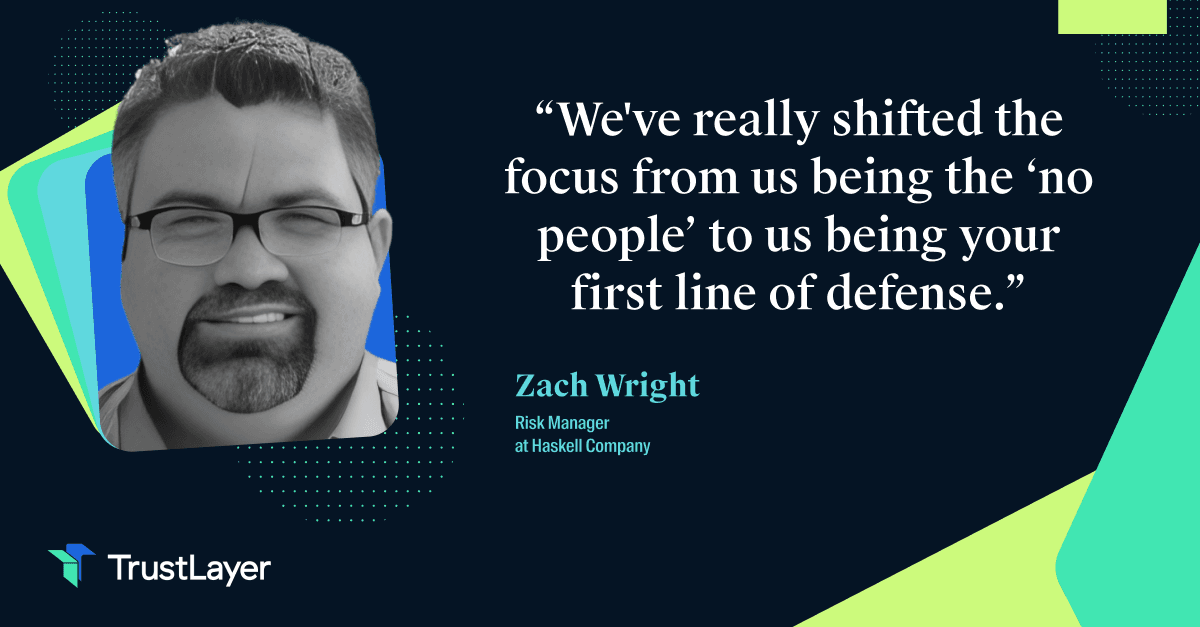How Automated Risk Solutions Drive Strategic Leadership and Foster Business Growth
Effective risk management has never been more critical in a rapidly evolving business landscape. Companies across various industries are transitioning from a compliance-focused approach to one grounded in confidence. This shift is not just about adhering to regulatory mandates; it's about embracing automation to empower leadership decision-making and enhance operational efficiency. This article will explore how automated risk solutions can elevate your business and transform how leaders engage with risk management.
Understanding the Shift from Compliance to Confidence
The traditional risk management model heavily emphasizes compliance. Organizations often focus solely on meeting regulatory requirements, which can lead to a checkbox mentality that stifles actual risk mitigation. However, as businesses recognize that compliance does not equate to security, there has been a shift towards a more holistic and proactive approach to managing risks through automation.
This evolution signifies a new paradigm where businesses prioritize confidence in their operations. Adopting automated risk solutions allows leaders to anticipate risks, analyze potential impacts, and make informed decisions that align with the organization's strategic objectives. According to a recent study, 65% of executives believe utilizing automation for risk management positively influences overall business performance.
The Role of Automation in Modern Business
Automation has become a cornerstone of modern business practices, revolutionizing how organizations approach tasks ranging from data entry to risk assessment. By employing automated systems, businesses can streamline processes, reduce human error, and ensure timely responses to emerging threats. This level of efficiency enhances compliance and fosters a culture of agility and responsiveness that is crucial in today's dynamic environment.
Moreover, automation facilitates collecting and analyzing vast amounts of data, providing organizations with insightful metrics that guide strategic planning. This transition will empower leaders to act with confidence rather than react under pressure, driving the organization toward sustainable growth. Integrating machine learning and artificial intelligence into risk management systems further enhances this capability, enabling predictive analytics that can foresee potential disruptions before they occur, thus allowing businesses to prepare and adapt proactively.
The Intersection of Leadership and Automation
As leaders embrace automation as a fundamental element of their strategy, they can shift their focus from day-to-day operations to long-term vision and planning. The intersection of leadership and automation represents an exciting opportunity for organizations to foster innovation and drive transformation.
Leaders who leverage automated risk solutions gain a competitive edge. They can proactively identify potential challenges and align their teams accordingly, fostering a more resilient and strategically agile business model. With 70% of executives indicating that they view automation as essential for leadership effectiveness, it is clear that this intersection will shape the future of work. Furthermore, as organizations become more reliant on data-driven decision-making, the role of leadership will evolve to include a deeper understanding of technology and its implications for business strategy. This shift not only enhances the effectiveness of leaders but also cultivates a workforce that is more adaptable and skilled in navigating the complexities of an automated landscape.
The Power of Automated Risk Solutions
Automated risk solutions allow businesses to integrate technology into their risk management frameworks. Understanding these systems' capabilities is essential to appreciating their transformative potential.
Defining Automated Risk Solutions
Automated risk solutions are software-driven systems that identify, assess, and manage organizational risks. Unlike traditional risk management methods, which often rely heavily on manual processes and subjective judgment, automated solutions provide a systematic approach that delivers consistent results.
These tools can sift through data points and alerts, highlight areas of concern, and generate comprehensive reports. With automated risk solutions, organizations can frequently scan their operational landscape for vulnerabilities, allowing for timely interventions that enhance overall security and compliance.
Benefits of Implementing Automated Risk Solutions
The benefits of implementing automated risk solutions go beyond mere compliance. By integrating these technologies into their risk management practices, businesses can experience:
- Improved Accuracy: Automation minimizes human errors, ensuring more reliable data and analysis.
- Time Savings: By automating repetitive tasks, organizations free up resources that can be redirected toward strategic initiatives.
- Real-time Data Insights: Continuous monitoring enables quick responses to evolving risks, improving risk awareness across the organization.
Furthermore, compliance with regulations like the General Data Protection Regulation (GDPR) is streamlined. As companies automate processes like managing certificates of insurance, they create a more efficient workflow that ensures adherence to regulatory mandates without sacrificing quality or speed.
Additionally, integrating machine learning and artificial intelligence within automated risk solutions allows for predictive analytics, which can foresee potential risks before they manifest. This proactive approach mitigates risks and fosters a culture of risk awareness among employees, encouraging them to be vigilant and informed. Organizations leveraging these advanced technologies can create a more resilient operational framework that adapts to changing market conditions and emerging threats.
Moreover, automated risk solutions can enhance collaboration across departments. By providing a centralized platform for risk data, stakeholders from various functions—such as finance, operations, and compliance—can seamlessly access and share insights. This interdepartmental communication fosters a holistic understanding of risks, enabling organizations to develop comprehensive strategies that address vulnerabilities from multiple angles, ultimately leading to a more robust risk management posture.
The Impact of Automation on Business Operations
As automated risk solutions become increasingly vital, their impact on business operations is profound. This integration can genuinely change how organizations perform daily tasks and engage with risk management.
Streamlining Processes with Automation
Automation catalyzes streamlining various business processes. Businesses can enhance their workflows by eliminating redundancies and creating a more efficient operating environment. For instance, automating the collection and verification of insurance certificates can reduce the administrative burden on teams while ensuring compliance.
Additionally, automated systems can help businesses establish consistent standards for assessing risks, thus promoting a uniform approach to risk management. This standardization enhances efficiency and strengthens accountability across teams. Implementing automated risk management tools can also facilitate real-time data analysis, allowing organizations to quickly adapt to changing circumstances and make informed decisions based on current risk profiles. This agility is crucial in today's fast-paced business landscape, where the ability to pivot in response to new threats can be the difference between success and failure.
Enhancing Efficiency and Productivity
The efficiency gained through automation inevitably leads to enhanced productivity. Reports indicate that businesses employing automation see up to a 30% increase in productivity. By allowing employees to focus on more strategic and creative tasks, organizations foster a culture of innovation and engagement, reducing turnover rates and enhancing job satisfaction.
Moreover, a strong focus on automated risk solutions helps effectively align organizational objectives with risk appetite, allowing businesses to flourish in uncertain environments. This alignment is particularly important in sectors such as finance and healthcare, where regulatory compliance and risk mitigation are paramount. As automation continues to evolve, it optimizes existing processes. It opens up new avenues for growth by enabling companies to explore innovative business models and strategies previously unattainable due to resource constraints. By leveraging advanced analytics and machine learning, businesses can predict potential risks and opportunities, thus positioning themselves ahead of the competition.
Automation and Leadership: A New Perspective
Incorporating automation within risk management reshapes leadership perspectives. As automation becomes ingrained in business processes, leaders must adapt their strategies to maximize its potential.
Automation as a Leadership Tool
For modern leaders, automation is not merely an operational necessity but a strategic tool that can drive significant organizational change. By effectively integrating automated risk solutions, leaders can enhance their ability to make informed decisions based on real-time data and insights, enabling a proactive rather than reactive approach to risk management.
Aligning automation with leadership practices empowers executives to inspire stakeholder confidence and fosters an environment where innovation and accountability flourish. Leaders who embrace automated risk solutions demonstrate adaptability, a key trait for navigating today's global market complexities.
Moreover, the integration of automation into leadership practices can streamline communication across departments, breaking down silos that often hinder collaboration. With automated systems in place, information flows more freely, allowing teams to work together towards shared goals. This interconnectedness enhances operational efficiency and cultivates a culture of transparency where employees feel informed and engaged in the decision-making process.
Driving Business Strategy with Automation
Automated risk solutions indirectly enhance business strategy by giving leaders the agility to respond swiftly to market changes. This capability allows organizations to pivot, refocus, and exploit opportunities without being bogged down by outdated processes.
Studies show that 80% of organizations leveraging automation report a remarkable ability to achieve strategic objectives, underscoring automation's essential role in driving forward-thinking business strategies.
Furthermore, as automation evolves, leaders are presented with new opportunities to harness advanced technologies such as artificial intelligence and machine learning. These innovations can analyze vast amounts of data at unprecedented speeds, uncovering previously unattainable patterns and insights. By leveraging these technologies, leaders can anticipate risks and identify emerging trends, allowing their organizations to stay ahead of the competition and adapt to their industries' ever-changing landscapes.
Future Trends in Business Automation
As we look ahead, integrating automation into risk management will evolve further, shaping industry practices and expectations.
Predicting the Future of Automated Risk Solutions
Forecasting the trajectory of automated risk solutions reveals several exciting trends. As technology progresses, we can expect enhanced data analysis capabilities, allowing organizations to predict risks more accurately and in real-time.
Additionally, automation will increasingly incorporate artificial intelligence and machine learning algorithms to improve the relevance of insights and responses, fundamentally changing how organizations perceive and handle risk. These advancements will streamline processes and enhance decision-making by providing predictive analytics that can identify potential threats before they materialize. For example, financial institutions may utilize these tools to monitor transaction patterns, flagging anomalies that suggest fraud or compliance issues, thereby safeguarding their assets and reputation.
Preparing for the Future: Adapting to Automation Trends
To stay competitive, businesses must proactively adapt to these automation trends. Encouraging a culture of learning and providing training programs that enable teams to understand and leverage automated solutions will be vital. Organizations must also keep abreast of industry developments, ensuring their risk management frameworks constantly improve and evolve. This adaptability prepares teams for immediate changes and fosters innovation as employees become more comfortable with technology and can contribute ideas for further enhancements.
By investing in automated risk solutions today, companies can navigate tomorrow's challenges with confidence and authority, moving from mere compliance to an empowered business era. Moreover, as organizations harness the power of automation, they can expect a significant reduction in operational costs and an increase in efficiency. This shift allows businesses to allocate resources more effectively, focusing on strategic initiatives rather than being bogged down by manual processes. The ripple effect of these changes will likely lead to a more agile and resilient business landscape where organizations can swiftly adapt to market fluctuations and regulatory demands.
As you look to transform your business from a state of compliance to one of confidence, TrustLayer stands ready to elevate your risk management to the next level. Embrace the future with our best-in-class certificate of insurance (COI) tracker, explicitly designed for the modern risk manager. Join the hundreds of thousands of companies that have already streamlined vendor document management and proof of insurance processes with our innovative technology. Don't let manual, time-consuming verification of compliance documents hold you back. Let TrustLayer automate and simplify these tasks, freeing you to focus on strategic growth and operational excellence. Set up a time to talk with our team and discover how TrustLayer can help you navigate the complexities of modern risk management with ease and efficiency.








